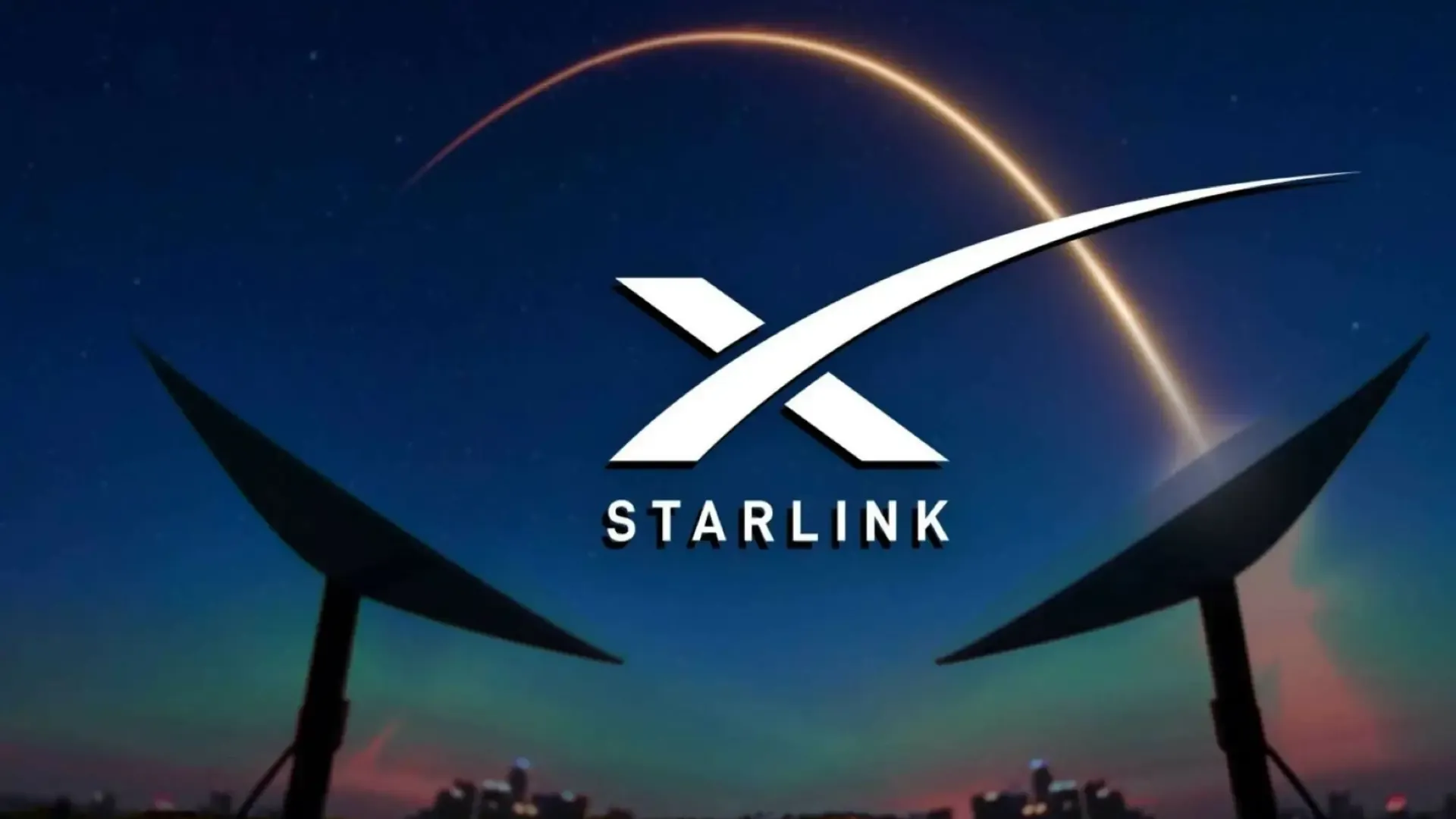
Starlink Outage: Rare Network Blackout & Fallout
On July 24, 2025, SpaceX’s global satellite internet service Starlink experienced a significant network outage, affecting users across the U.S., Europe, and even remote parts of Australia. The disruption, lasting approximately 2.5 hours, impacted over 61,000 to 64,000 users reported via Downdetector. The outage was confirmed by Starlink executives—including VP Michael Nicolls—and CEO Elon Musk publicly apologized, promising to “address root cause to ensure it doesn’t happen again”.
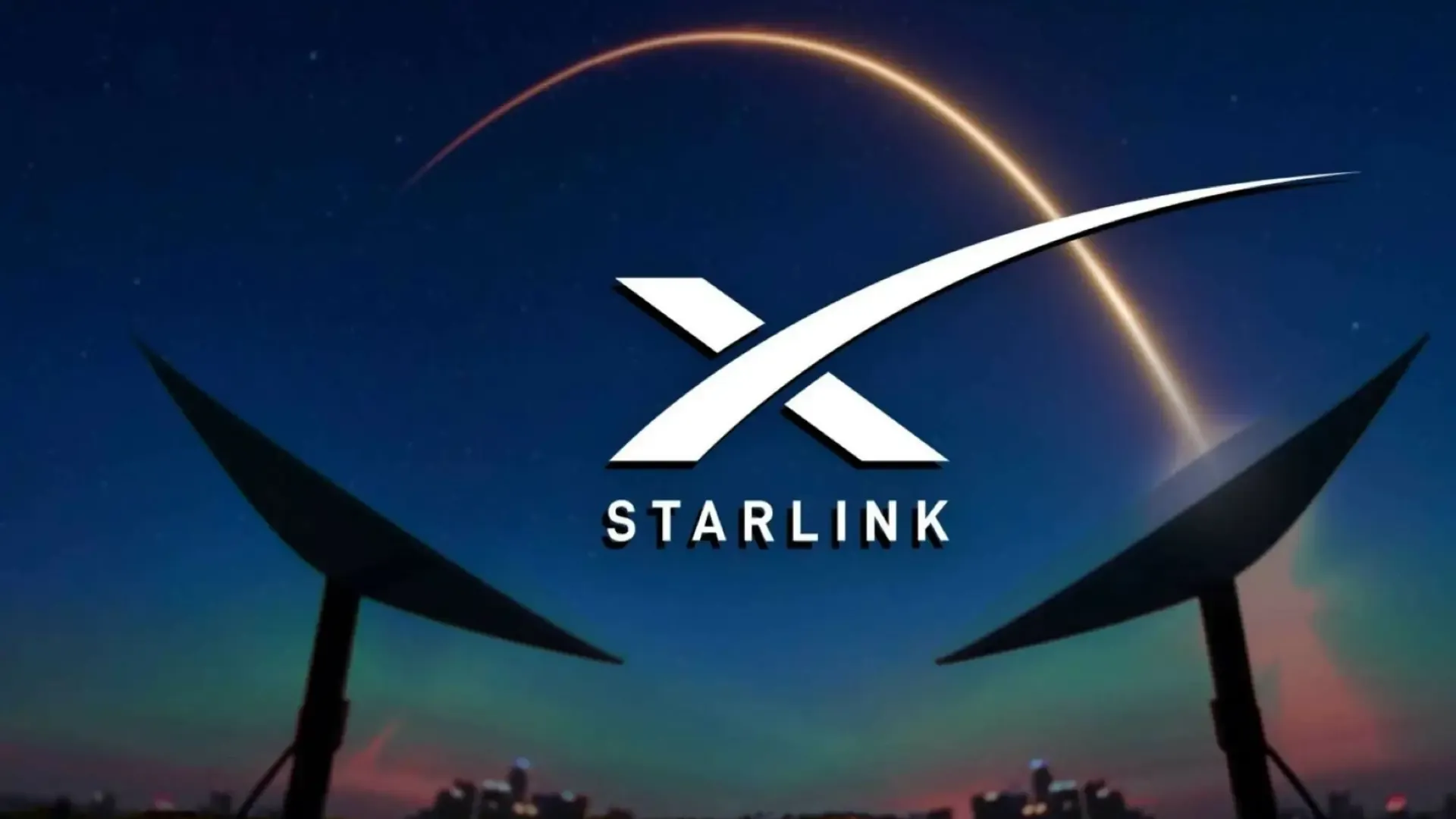
🌐 1. Scale & Scope of the Problem
Service disruptions were reported across the United States, parts of Europe, and remote regions in Australia. The most heavily impacted markets included rural and underserved areas where Starlink is often the sole internet option. Downdetector aggregated well over 60,000 outage reports, while monitoring service NetBlocks estimated connectivity dropped to just 16% of normal levels during the peak of the outage.
🧠 2. Cause: Software Failure at the Core
Starlink engineers traced the root cause to a failure in“key internal software services”governing core network operations. Though Starlink has over 8,000 satellites in orbit, the outage originated in backend systems rather than satellite hardware. VP Nicolls called it a rare network software failure, with no evidence of external attack. Musk described the incident as unprecedented and indicated ongoing efforts to reinforce system resiliency.

📣 3. Public Response and Statements
Elon Musk took to X (formerly Twitter) to apologize: "Sorry for the outage. SpaceX will remedy root cause to ensure it doesn’t happen again." Meanwhile, Nicolls confirmed service was“mostly recovered” by about 5:30 p.m. CDT, roughly two hours after the incident began around 3:15 p.m. EDT. They affirmed continuous customer updates and pledged a thorough internal review.
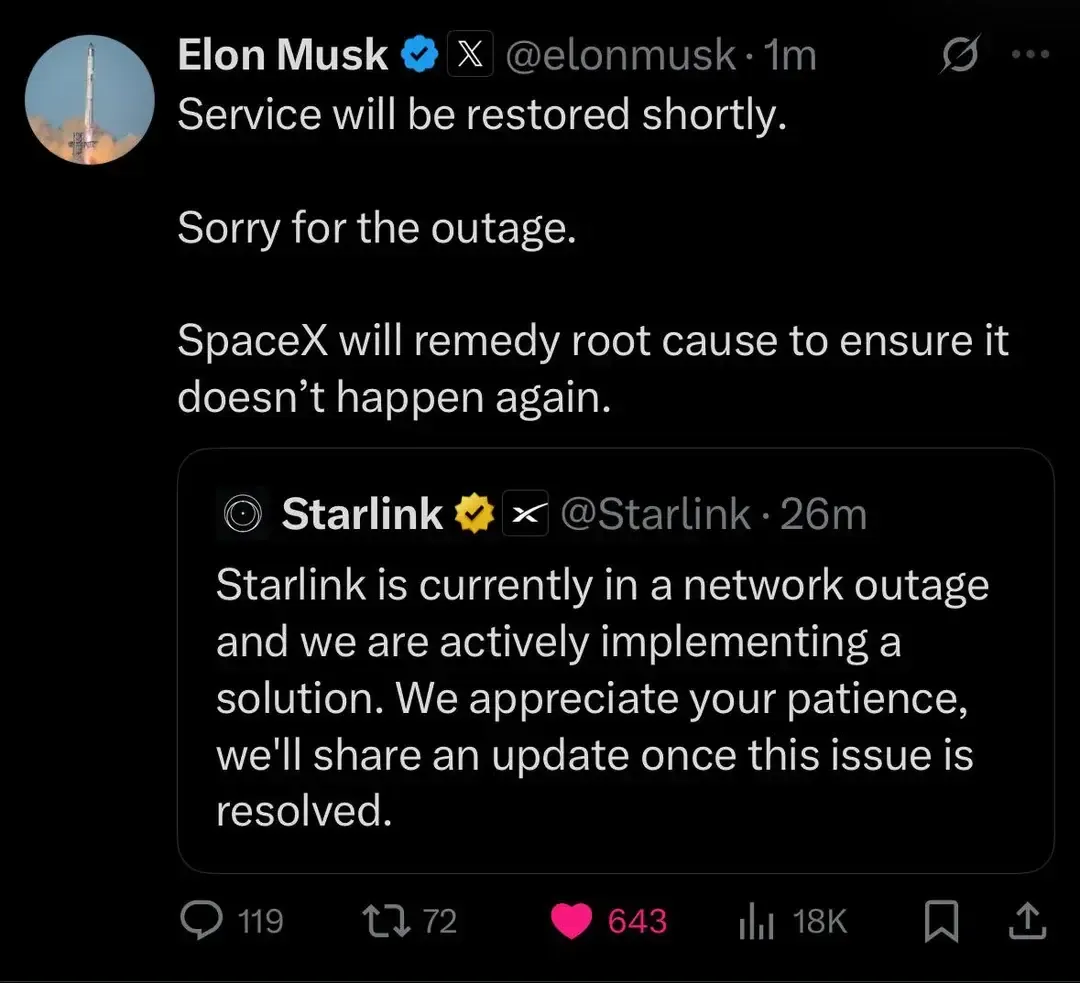
📊 4. Service Tracking & Outage Maps
During the outage, platforms like Downdetector, StatusGator, NetizenPulse, and regional tools provided realtime tracking. Downdetector logged spikes in user complaints under search terms like“starlink outage”, “starlink down” and “starlink not working” Outage maps showed high-density report zones across states like Texas, Florida, California, Maryland, Tennessee, as well as parts of Australia—such as Queensland and Tasmania—with some communities like Victoria’s Gippsland still missing service after 2.5 hours.
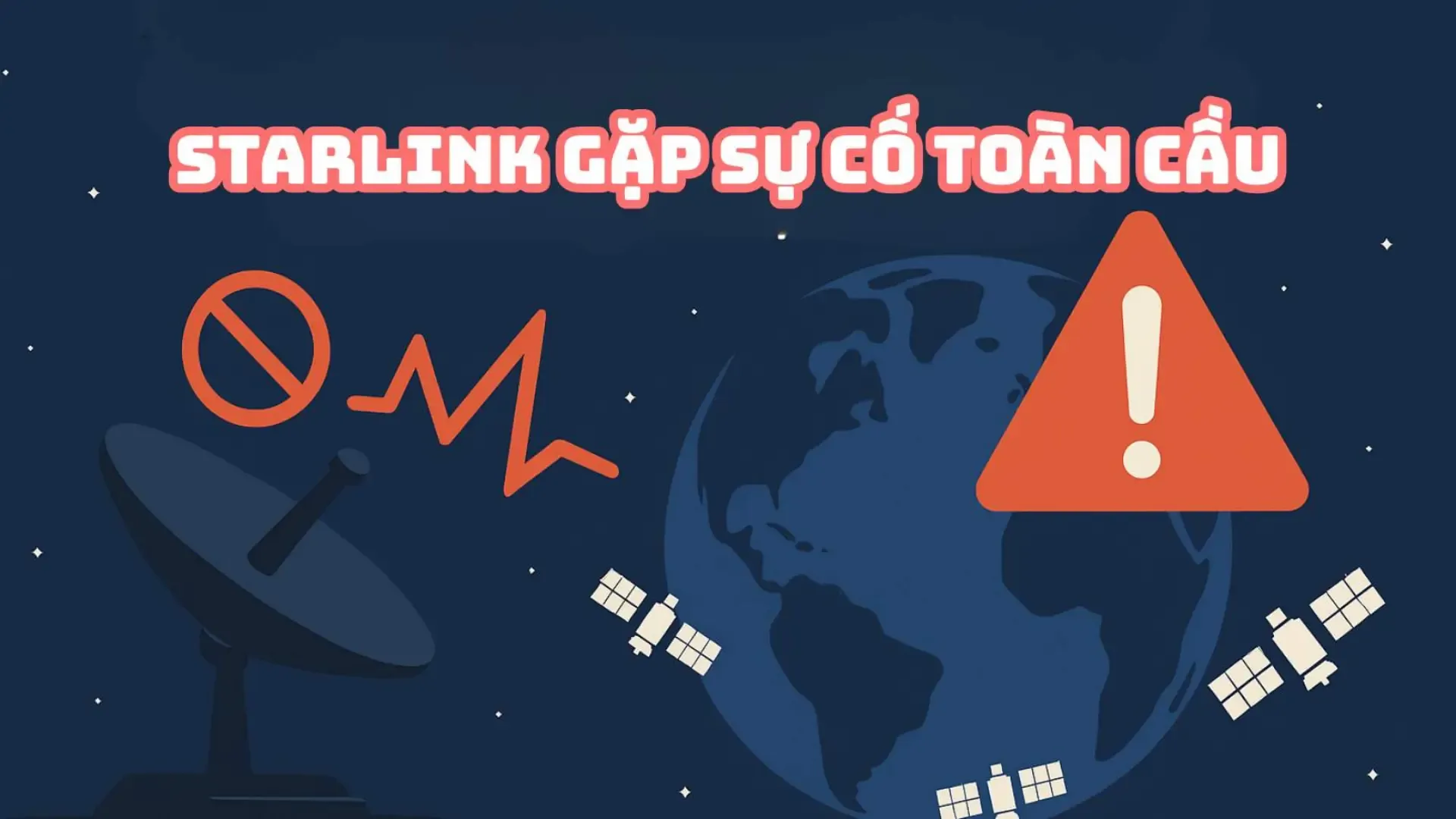
✴️ 5. Why This Matters: Context & Risks
- Longest outage ever: Several analysts noted this is possibly the most significant global disruption Starlink has encountered since reaching mass adoption ~2024.
- Interdependency risks: The outage occurred one day after Starlink teamed with T-Mobile to launch their T‑Satellite service, raising speculation a new integration patch may have triggered instability.
- Geopolitical implications: Military users, including Ukrainian forces, rely on Starlink for battlefield connectivity. That sector reportedly lost connectivity for roughly 150 minutes during the outage—its longest such blackou.
🔍 6. What You Can Do If Your Starlink Is Down
- Check multiple sources—Downdetector, StatusGator, official Starlink app or website—to confirm if the outage is widespread or local.
- Review the Starlink outage map or community tools like NetizenPulse to identify geographic clusters of issues.
- Troubleshoot local hardware: power-cycle the terminal (“Dishy”), reboot router, verify obstructions, and confirm firmware is up-to-date.
- If the problem persists and is global, wait for official updates via X or email from Starlink support.
- Consider alternate connection: mobile hotspot, local Wi-Fi, or fallback ISP until service returns.
🔧 7. Building Resilience: Organizational Lessons
For businesses and remote users relying on Starlink as primary connectivity:
- Establish multi-path redundancy—e.g., backup cellular or wired options.
- Monitor service proactively via tools like StatusGator, Downdetector, and NetizenPulse for alerts labelled“starlink outage today”, “starlink status”, “starlink down detector”.
- Set custom alerts for outage keywords: "is starlink down?", "starlink service outage", "starlink outage map", "starlink issues today".
- Review SLA agreements if Starlink is used in commercial or emergency services to ensure contingency plans.
🌍 8. Broader Implications for Satellite Internet
This incident underscores the fragility of a centralized satellite-internet backbone: while Starlink’s satellite constellation enables global coverage, core network software remains a single point of failure. As the Starlink grid scales toward over 8,000 satellites and millions of users across 140+ countries, maintaining uptime during large-scale service expansion—including ventures like Starshield for defense clients—becomes critical.
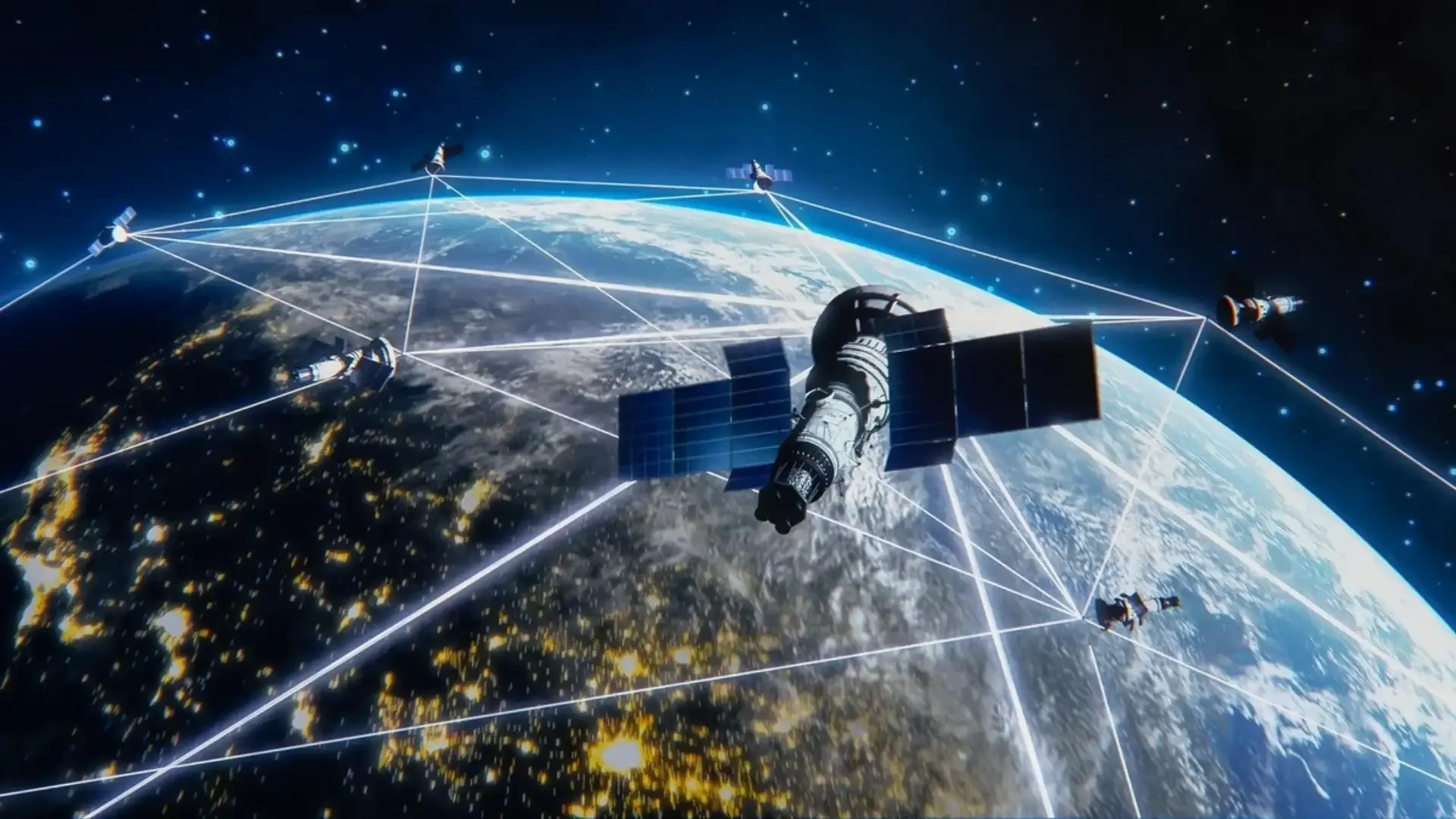
📌 Final Takeaway
The July 24 Starlink outage represents a watershed moment: it was a rare global disruption fueled by internal software failure, affecting tens of thousands of users. Starlink’s response—prompt acknowledgment, public apology, and promise of root-cause analysis—was swift. Yet it highlights the importance of layered resilience as satellite internet systems become more essential.
Going forward, users and organizations alike should prepare for system interruptions via redundancy, monitoring, and proactive recovery plans. While satellite connectivity brings us online in the most remote locations, its reliability must be paired with smart mitigation planning.

Stay tuned to TechPickr123’s Insights series for incident timelines, recovery analysis, and comparative insight into global connectivity systems.





